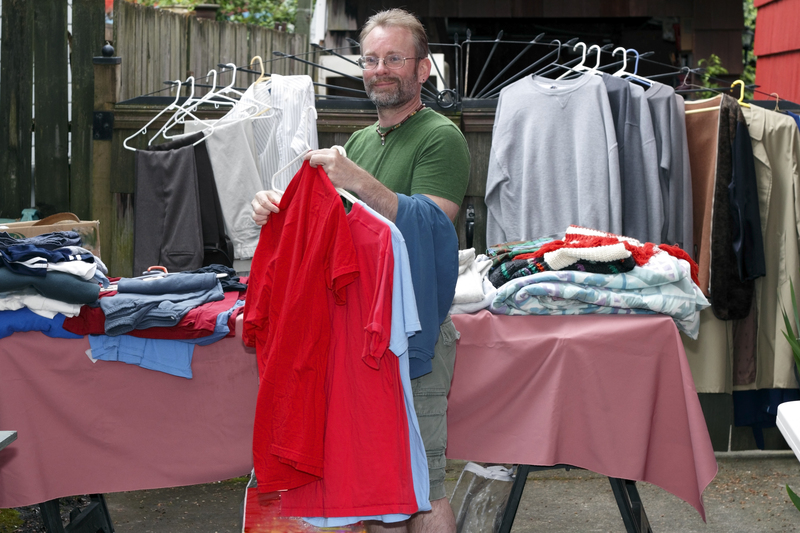Simple Tips for Making PPE Waste Disposal Safer
The COVID-19 pandemic highlighted the indispensable role of personal protective equipment (PPE) in safeguarding individuals and workers across numerous industries. However, as the use of masks, gloves, gowns, and face shields surged globally, so did concerns about the safe and effective disposal of PPE waste. Improper handling and discarding of used PPE can endanger communities, contaminate the environment, and overwhelm waste management systems. In this comprehensive guide, you will find simple yet effective tips for making PPE waste disposal safer, which are practical and easy to implement both at home and in workplaces.
Why Safe PPE Waste Disposal is Important
Why should we focus on safe PPE waste disposal? The answer is simple: PPE used to protect lives can become hazardous waste post-use. Used masks, gloves, and other protective gear may be contaminated with infectious materials, such as bacteria and viruses. If not managed appropriately, PPE waste can:
- Spread disease among waste handlers and the public
- Pollute water sources and landscapes with microplastics and medical contaminants
- Block drainage systems and contribute to urban flooding
- Threaten wildlife and marine creatures who may ingest or get entangled in PPE
- Overwhelm landfills and further stress global waste management infrastructures
Making PPE waste disposal safer is not just about environmental stewardship. It's about community health, occupational safety, and global responsibility.

Common Types of PPE Waste
Before delving into tips for safe PPE waste management, it's helpful to understand the most common types of PPE used worldwide:
- Face Masks (surgical and cloth)
- Gloves (latex, nitrile, vinyl, and plastic)
- Face Shields and Goggles
- Gowns and Aprons
- Shoe Covers
- Head Covers
Each type of PPE may require slightly different disposal practices based on material and contamination risk.
Simple Tips for Safer PPE Waste Disposal
1. Separate PPE Waste from Regular Waste
The cornerstone of safe PPE waste disposal is segregation. Mixing PPE waste with general refuse increases the risk of contamination. Implement these steps:
- Designate specific waste bins for PPE items.
- Ensure bins are clearly labeled "PPE Waste Only" and are visible to users.
- Use colour-coded bags (commonly red or yellow) for infectious waste for easier identification and proper handling.
2. Always Wear Gloves When Handling Used PPE
Used masks and gloves can harbor pathogens. Wearing disposable gloves while collecting, bagging, and disposing of PPE waste can significantly reduce the risk of cross-contamination. Remember:
- Wash your hands thoroughly before and after wearing gloves.
- Avoid touching your face or other surfaces while handling used PPE.
- Dispose of gloves in the same dedicated PPE waste bin after use.
3. Choose Sturdy, Leak-Proof, and Tear-Resistant Bags
PPE waste, especially when contaminated with bodily fluids (from hospitals or care centers), can cause leaks and spills if placed in poor-quality bags. To make PPE waste disposal safer:
- Opt for medical-grade or double-layered plastic bags.
- Avoid overfilling bags. Leave room at the top to securely tie them shut.
- Check bags for punctures before placing them for collection.
4. Seal and Label PPE Waste Properly
Once a bag is full, always seal it tightly to prevent accidental exposure. Consider using cable ties or strong knots. If possible:
- Label the bag "Used PPE" or "Infectious Waste" for clear identification.
- Note the collection date and location, especially in institutional or workplace settings.
5. Store PPE Waste in a Safe, Designated Area
Before final disposal, store used PPE waste in a secure spot, away from people, pets, and public access. Tips include:
- Keep bins in a shaded, well-ventilated space.
- Ensure waste is not exposed to rain, wind, or wildlife.
- Regularly disinfect bin surfaces with approved cleaners.
6. Follow Local PPE Waste Disposal Guidelines
Different municipalities have their own recommendations and facilities for handling medical or hazardous waste. To ensure PPE waste disposal safety:
- Contact your local health department or waste management authority for updated PPE disposal protocols.
- Attend community awareness programs or webinars on medical waste management.
- Utilize authorized disposal drop-off points, if available.
*If no medical waste collection is provided by your local government,* double-bag and tightly seal the PPE waste before placing it with household rubbish.
7. Do Not Litter or Burn PPE Waste
Tossing masks, gloves, or other PPE on the streets, in parks, or into toilets is highly irresponsible. Likewise, open burning of PPE waste releases toxic fumes and pollutes the air. Instead:
- Dispose of all PPE items only in dedicated bins or collection points.
- Report public littering hot-spots to community authorities.
8. Promote Proper PPE Disposal Practices in Workplaces
Workplaces, especially in healthcare, hospitality, and industrial sectors, have a higher volume of PPE waste. To encourage compliance:
- Display instructional signs and posters on correct disposal methods.
- Train employees and cleaning staff on the hazards of improper PPE disposal.
- Perform regular audits on PPE waste stations and refill supplies as needed.
Employee awareness is key to consistently improving PPE waste management.
9. Embrace Reusable PPE, Where Safe and Possible
While not all PPE is designed for reuse, certain types -- such as washable cloth masks -- can significantly reduce daily waste. If your job or situation allows:
- Opt for reusable and washable PPE certified for protection and hygiene.
- Follow stringent laundering protocols to avoid germ transmission.
- Store clean and dirty PPE separately to prevent cross-contamination.
10. Explore PPE Recycling Initiatives
As science and technology evolve, more organizations and startups are developing safe methods to recycle PPE waste:
- Some companies collect used PPE and convert it into construction materials or energy.
- Participate in local recycling initiatives aimed at reducing PPE's ecological footprint.
Protecting Waste Handlers and the Public
Waste handlers and sanitation workers are on the front lines and require special attention. To ensure their safety:
- Provide comprehensive training on recognizing and handling PPE waste.
- Equip them with proper gloves, aprons, and face shields during collection and processing.
- Schedule regular medical checkups for waste management staff.
- Ensure vaccination against high-risk infectious diseases.
The Environmental Impact of PPE Waste
Massive amounts of single-use PPE have already taken a toll on the planet. Discarded masks and gloves are clogging rivers, littering beaches, and entering food chains as microplastics. Safe PPE waste disposal practices help to:
- Minimize pollution in oceans and rivers
- Reduce the risk of animal entanglement and ingestion
- Promote sustainability in healthcare and other sectors
Safer PPE Disposal at Home
Even small households generate PPE waste. Here are some practical steps to make PPE disposal safer at home:
- Keep a small, separate, lidded bin in your entryway for masks and gloves.
- Seal bags with a twist-tie and double-bag if someone in the home is sick.
- Wash your hands with soap and water for at least 20 seconds after handling used PPE.
- Disinfect the bin with a bleach solution weekly.
What Not To Do With Used PPE
Always avoid these unsafe practices:
- Do not attempt to clean and re-use single-use PPE.
- Do not flush PPE down the toilet; it will clog plumbing and harm marine life.
- Avoid touching the front surface of used masks and gloves.
- Never leave used PPE in open or accessible areas.
Raising Awareness and Community Action
Education is a powerful tool in the fight against PPE waste hazards. Schools, workplaces, and community groups can:
- Run campaigns about safer PPE waste disposal practices.
- Organize neighborhood clean-up events targeting PPE litter.
- Offer talks or webinars with environmental experts.
- Share information on social media to reach a wider audience.

PPE Waste Disposal Innovations
New approaches are being developed to tackle the mounting PPE waste challenge. These include:
- Advanced sterilization techniques enabling safe recycling
- Biodegradable PPE made from plant-based materials
- Smart bins with touchless, sensor-activated lids
- Turning used masks into asphalt and construction bricks
Supporting eco-friendly alternatives and innovations can help build a sustainable, safer future.
Conclusion: Simple Steps for a Safer, Cleaner World
Making PPE waste disposal safer is a vital responsibility for individuals, businesses, and entire communities. As the world continues to depend on PPE for protection, proper disposal methods are crucial to curb the spread of disease and environmental damage. By following these straightforward tips:
- Separate and contain PPE waste
- Handle used materials with care and appropriate protection
- Comply with local waste disposal guidelines
- Promote awareness and support innovations
Every effort counts. By embracing these simple tips for safer PPE waste disposal, you contribute not only to the health and safety of your community but also to the well-being of our planet.